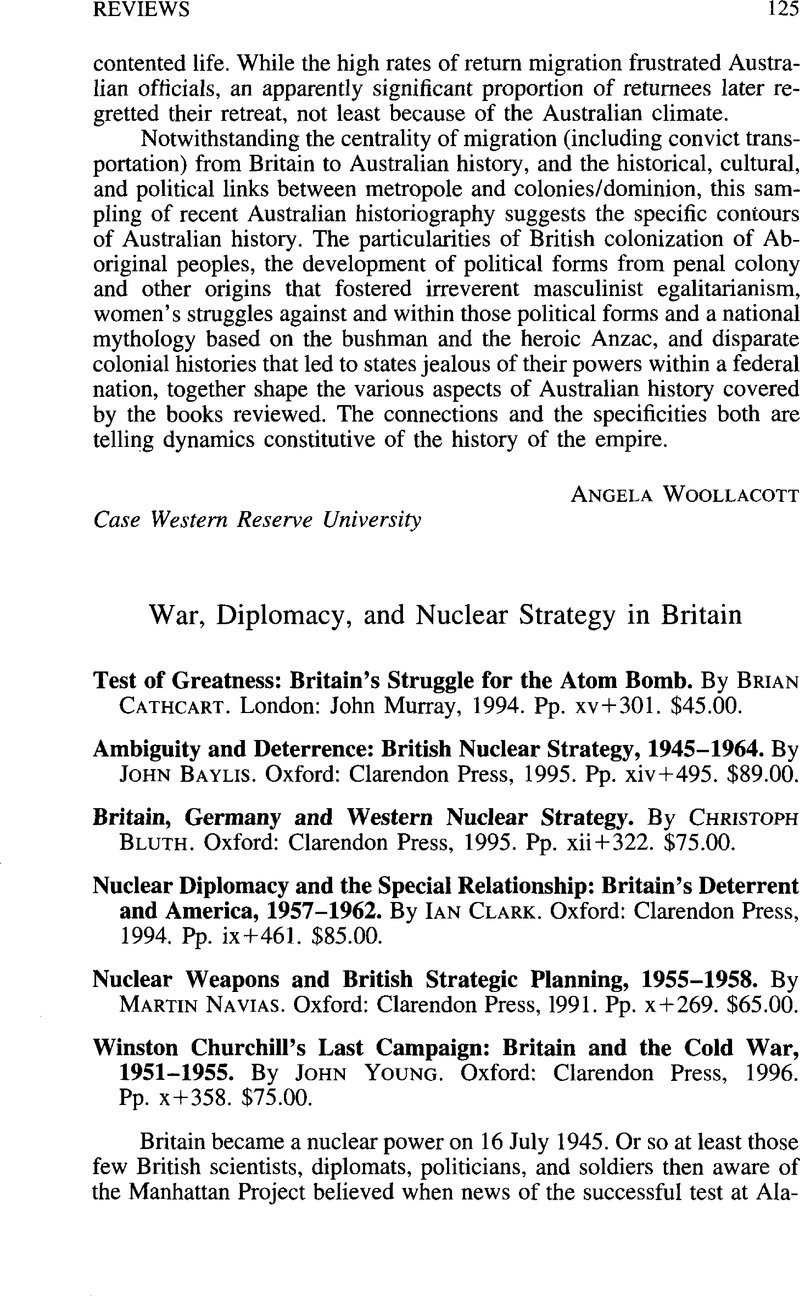No CrossRef data available.
Article contents
War, Diplomacy, and Nuclear Strategy in Britain - Test of Greatness: Britain's Struggle for the Atom Bomb. By Brian Cathcart. London: John Murray, 1994. Pp. xv + 301. $45.00. - Ambiguity and Deterrence: British Nuclear Strategy, 1945–1964. By John Baylis. Oxford: Clarendon Press, 1995. Pp. xiv + 495. $89.00. - Britain, Germany and Western Nuclear Strategy. By Christoph Bluth. Oxford: Clarendon Press, 1995. Pp. xii + 322. $75.00. - Nuclear Diplomacy and the Special Relationship: Britain's Deterrent and America, 1957–1962. By Ian Clark. Oxford: Clarendon Press, 1994. Pp. ix + 461. $85.00. - Nuclear Weapons and British Strategic Planning, 1955–1958. By Martin Navias. Oxford: Clarendon Press, 1991. Pp. x + 269. $65.00. - Winston Churchill's Last Campaign: Britain and the Cold War, 1951–1955. By John Young. Oxford: Clarendon Press, 1996. Pp. x + 358. $75.00.
Published online by Cambridge University Press: 10 January 2014
Abstract

- Type
- Reviews
- Information
- Copyright
- Copyright © North American Conference of British Studies 1999
References
1 The literature on Anglo-American nuclear diplomacy is vast and growing. Up-to-date bibliographies can be found in the books under review. Still indispensable are Botti, Timothy J., The Long Wait: The Forging of the Anglo-American Nuclear Alliance, 1945–1958 (New York, 1987)Google Scholar; and Gowing, Margaret, Independence and Deterrence: Britain and Atomic Energy, 1945–1952, 2 vols. (London, 1974)Google Scholar.
2 Membership of the Anderson committee fluctuated in the eighteen months of its life. Its central members were the scientists Edward Appleton, Patrick Blackett, Henry Dale, and George Thomson; the officials Alan Barlow and Nevile Butler; and the service representatives Alan Brooke and Lord Tedder.
3 The dissenter was the physicist Patrick Blackett. For a keen examination of his opposition, see Gowing, , Independence and Deterrence, 1:160–206Google Scholar.
4 Easily the most colorful expression of this shared view was Ernest Bevin's: “We've got to have this thing over here, whatever it costs…. We've got to have a bloody Union Jack flying on top of it” (quoted in Cathcart, p. 21).




